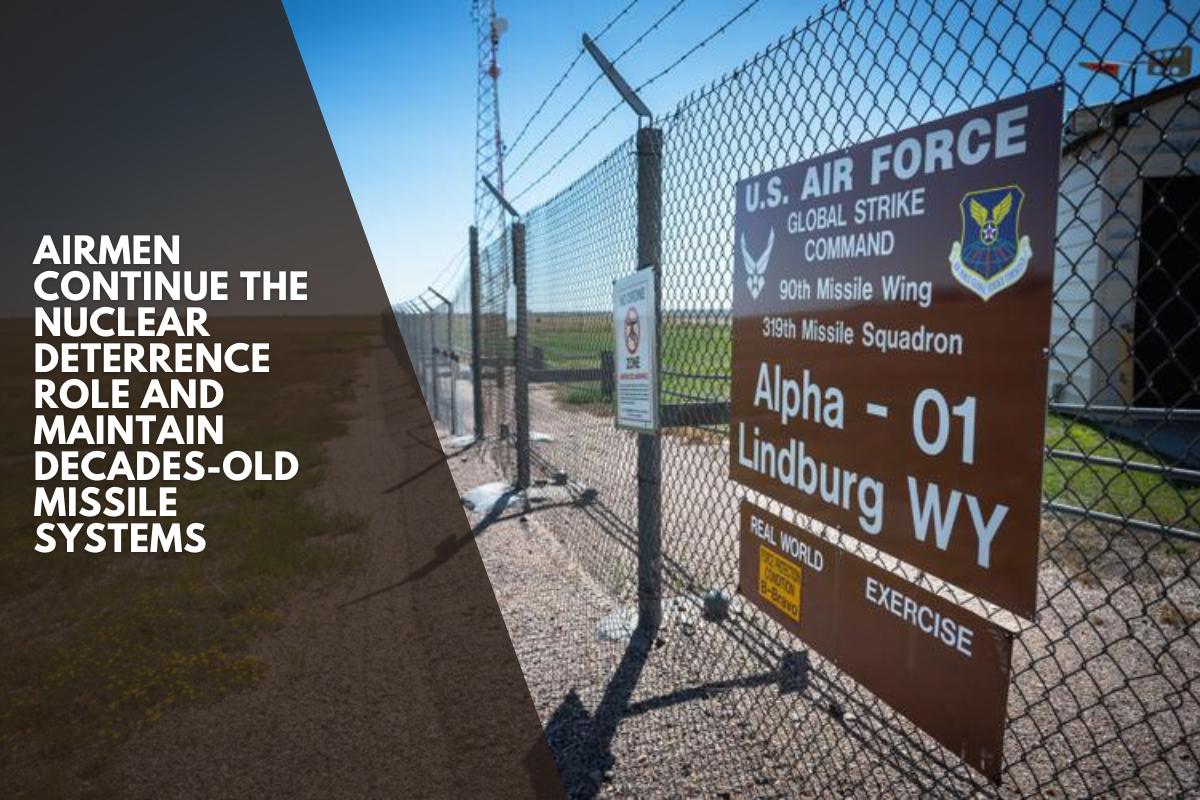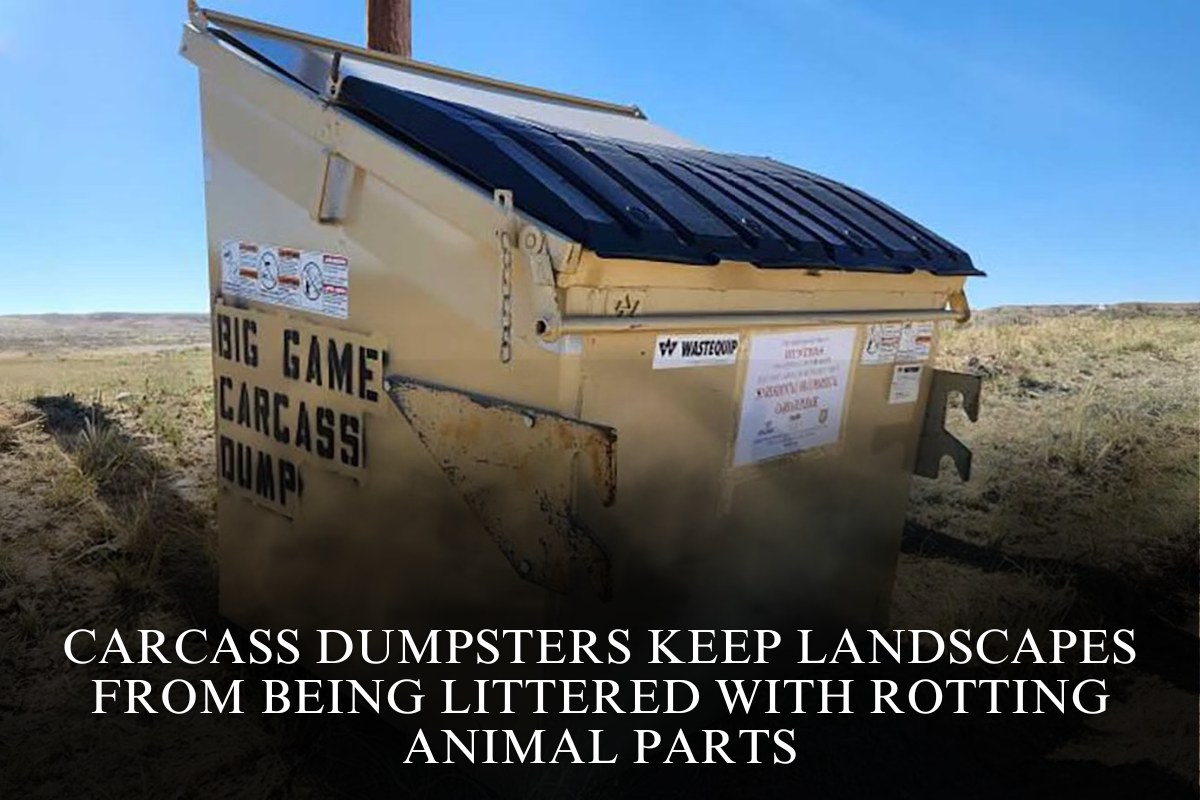BURNS — In an underground facility northwest of Burns, dedicated 90th Missile Wing defenders carry out critical nuclear deterrence operations.
F.E. Warren Air Force Base is responsible for 15 Launch Control Capsules (LCCs), one of which is housed at the Alpha-01 Missile Alert Facility (MAF). Each capsule oversees ten launch facilities, each of which is ostensibly armed with a Minuteman III intercontinental ballistic missile.
Though the facilities above ground appear to be nothing more than a few simple structures, sleeping quarters, and a recreation area with a pool table and television, below ground are young airmen constantly overseeing the land leg of the United States nuclear triad.
Airmen aged 19 to early 20s carry out strategic deterrence missions, with a focus on the Minuteman III, the current ICBM in service under the supervision of Air Force Global Strike Command.
“Our ICBMs provide special capability with strategic deterrence, deterring our adversaries from attacking both us and our allies,” Capt. Nolan Murgatroyd stated during a media tour on Wednesday. “Making sure our adversaries stay awake at night while our allies are sleeping peacefully.”
Young but capable.
Although these airmen are young, they are qualified and have received extensive training to manage the missiles, according to Glenn Robertson, 90th Missile Wing Public Affairs Chief of Media Relations.
“Our operators train at the ready every single day to be able to provide this capability,” Murgatroyd informed the audience. “I’m honored to be here in Wyoming. It is an honor to be at the F.E. Warren Air Force Base. We are grateful for the opportunities and the community that supports us.”
Airmen specialize in Minuteman III systems, allowing them to monitor and maintain them as needed.
Airmen cycling in and out of the facilities typically work 24-hour shifts to monitor the missile field from LCCs. During Wyoming’s harsh winter season, however, their shifts can last up to 72 hours.
At any point during those shifts, the airmen may be alerted to minor disturbances in the missile field, at which point they can notify the airmen on duty above ground, allowing the site to be inspected.
Those airmen are also monitoring sites more closely, responding to even the smallest disturbance caused by a mouse or stray cat in the same way they would a human threat, according to Murgatroyd.
Though these airmen are well qualified to perform their duties in nuclear deterrence operations, traces of their youthful demeanor can be seen throughout the facility.
Old Marvel comic cutouts line the halls above ground, alongside site information posters, and the walls below ground have been decorated over the years with signatures from previous crews, pop culture doodles, and murals depicting F.E. Warren Air Force Base’s long history.
Even safety warnings demonstrate past crews’ sense of humor. On the elevator blast shaft door, next to a nautical-looking wheel, an addition has been made in Sharpie to the safety warnings reading, “Slowly, this is not the Black Pearl, and you are not Jack Sparrow.”
Bits of normalcy have also found their way into the LCC, which recently received a small television with access to Netflix for use during occasional downtime.
Aside from that, the capsule is anything but a standard workspace. The structure is suspended by shock isolators, which protect the equipment from any external movement, such as earthquakes.
Life underground is not without its drawbacks. The lack of sunlight can interfere with airmen’s sleep and vitamin D levels. The constant hum of equipment, as well as the occasional alarm, impedes sleep.
“The room is for anything related to executing launch orders, keeping an eye on the missile field, and simply maintaining security,” 1st Lt. Harrison Martin explained, gesturing around the small control capsule.
Always prepared.
Martin is a crew commander on duty in the capsule. In the worst-case scenario, he and the other missileer on duty would help launch the Minuteman missiles.
Martin explained that one capsule has direct control over ten launch facilities. Despite the enormity of the responsibility, launching the missiles would require far more than the two airmen currently on duty.
“The weapon is inherently safe,” Martin explained. “There are numerous fail-safes involved. If he (the missileer) and I wanted to go rogue, we couldn’t. Even if we tried our hardest, there are other capsules that will stop us.”
Within the capsule, there are two small screens with grids that show the status of each site. If any disturbances occur, it is the responsibility of the crew commander and missileer on duty to notify the crews who maintain the missile field.
“They’re the ones out there risking injury, life for even life, potentially, depending on what type of maintenance they’re doing to make sure that our weapon system stays alive and we’re able to execute when necessary,” Martin informed us.
When airmen leave the wing, their knowledge and experience are not lost.
“The rest of our country calls on us to be nuclear experts,” Murgatroyd said. “… The rest of the Air Force and the rest of the military, as a whole, will look at us to have that information on what it means to be a nuclear operator, but also to utilize and understand nuclear weapons as a whole.”
Old systems
Though these sites are active 24 hours a day, seven days a week, and are constantly being maintained to ensure their functionality and security, the system is decades old.
The Minuteman III nuclear missiles were designed, built, and installed underground primarily in the 1960s. While updates have been made over the years, the design of the LCCs and their support systems indicates their age.
A series of sounds and color codes alert airmen to various issues, but there are no visuals available to them.
Since local landowners entered into land-use agreements with the military in the 1960s, the daily operations of MAFs such as Alpha-01 have rarely had a direct impact on Wyomingites’ daily lives.
However, due to the age of this system, the Air Force is planning to replace Minuteman III with the roughly $141 billion Sentinel nuclear weapons program, which is currently under development.
The specific plans for implementing the Sentinel project are not yet public. However, local communities are already concerned about the consequences of removing these existing missile facilities, according to previous Wyoming Tribune Eagle reporting.
“We will receive Sentinel at some point, and we are looking forward to it,” Murgatroyd said Wednesday. “However, our job is to be the experts on Minuteman III for the time being.”












